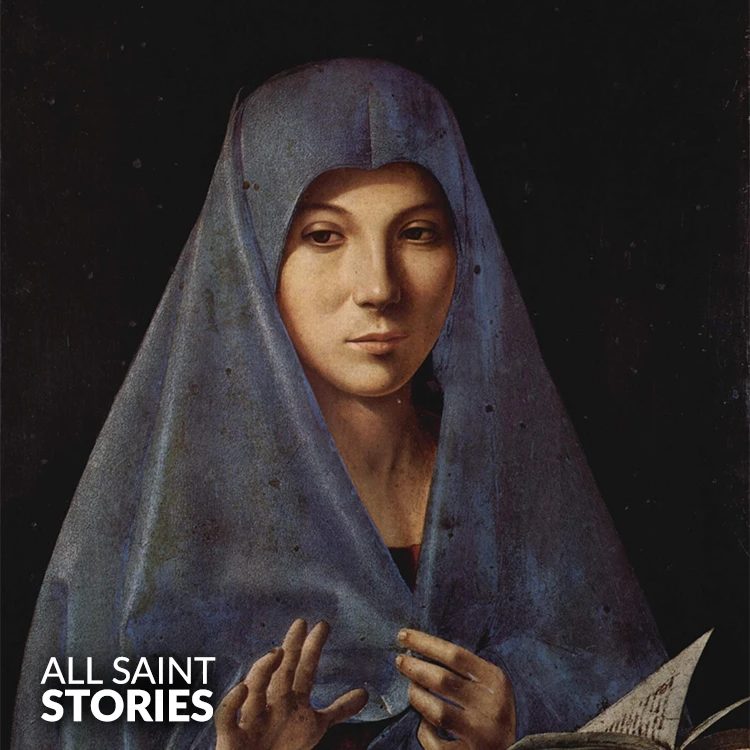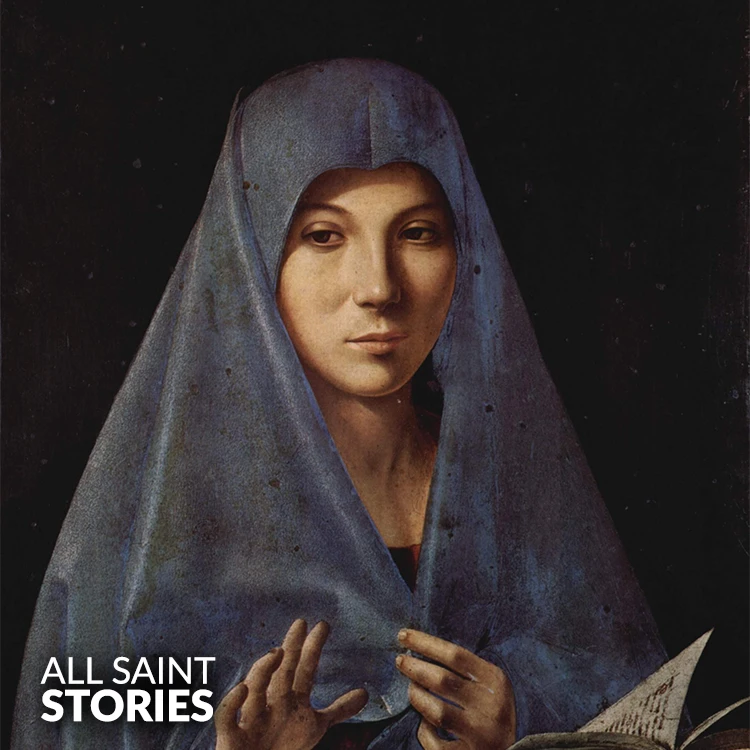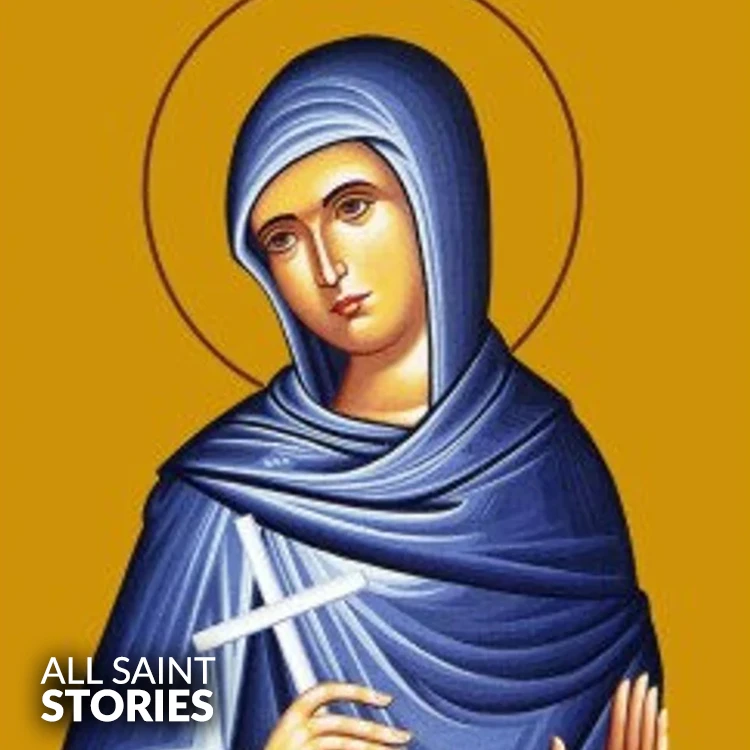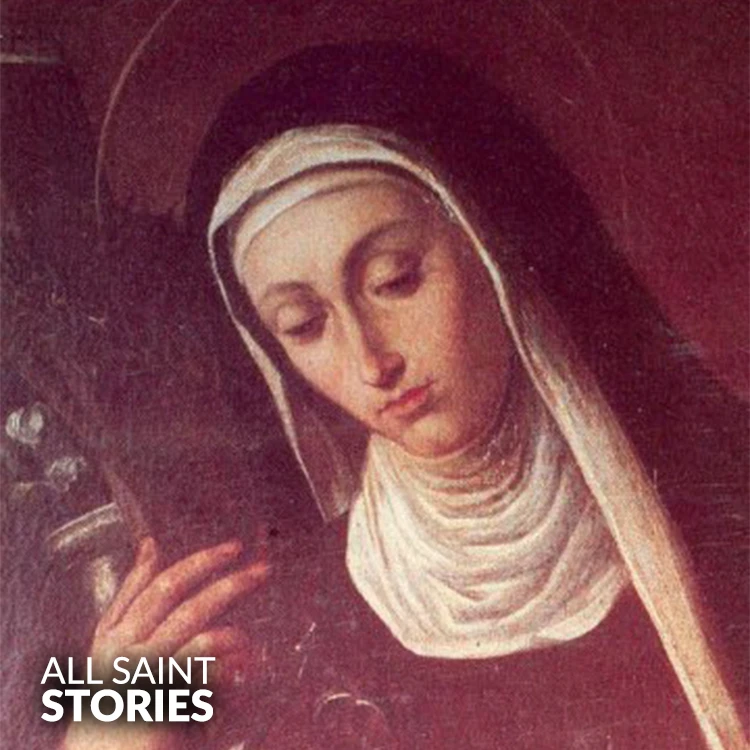O glorious St. Eustochia, who through humility, penance, and love for Christ crucified, chose the path of poverty and self-denial, intercede for us before the throne of God, that we too may grow in holiness and trust in Divine Providence. Amen.
ST. EUSTOCHIA CALAFATO
ST. EUSTOCHIA CALAFATO

St. Eustochia Calafato was a 15th-century Poor Clare nun from Messina, Sicily, known for her ascetic lifestyle, mystical visions, and deep devotion to the strict Franciscan rule. She founded the Montevergine Monastery and is venerated for her holiness and incorrupt body.
Eustochia Smeralda Calafato was born on March 25, 1434, in Santissima Annunziata, near Messina, Sicily, into a wealthy merchant family. Her father, Bernardo Calafato, was a well-known merchant, and her mother, Mascalda Romano, came from noble lineage. Despite her privileged upbringing, Eustochia displayed spiritual sensitivity from a young age. Legend says her mother had a divine vision telling her to give birth in a stable, symbolizing her daughter’s future sanctity.
At age 15, Eustochia defied societal norms and her family's expectations by choosing to enter the convent of the Poor Clares at Santa Maria di Basicò. Her family, particularly her brothers, strongly opposed this decision—so much so that they threatened to burn down the convent. Nonetheless, she remained resolute in her call to a life of religious devotion.
During her time in the convent, she became increasingly dissatisfied with what she perceived as a lax observance of the Rule of Saint Clare. Driven by a desire for a purer and stricter interpretation, she left Santa Maria di Basicò and, in 1464, with papal permission, founded the Monastery of Montevergine in Messina. The new monastery emphasized a rigorous form of asceticism, poverty, and prayer. As abbess, Eustochia guided her sisters with spiritual wisdom and strict discipline, and by the time of her death, the community had grown to fifty sisters.
Eustochia was renowned for her mystical experiences and miraculous occurrences. She lived a life marked by penance, long hours of prayer, and deep compassion for others. She was often seen in ecstasy and was considered to be divinely inspired. Her presence attracted many followers and admirers in Messina and beyond.
She died on January 20, 1485, and her body, remarkably preserved, is still venerated at the Montevergine Monastery, where it is displayed twice a week for public devotion. Though she has not been formally canonized by the Roman Catholic Church in the usual modern process, she is locally venerated as a saint and is honored as the co-patroness of Messina. Her feast day is celebrated annually on January 20, and her spiritual legacy continues to inspire those who seek a deeper relationship with God through simplicity and sacrifice.
Video Not Found
The information on this website is compiled from various trusted sources. While we aim for accuracy, some details may be incomplete or contain discrepancies.
If you notice any errors or have additional information about this saint, please use the form on the left to share your suggestions. Your input helps us improve and maintain reliable content for everyone.
All submissions are reviewed carefully, and your personal details will remain confidential. Thank you for contributing to the accuracy and value of this resource.
Credits & Acknowledgments
- Anudina Visudhar (Malayalam) – Life of Saints for Everyday
by Msgr. Thomas Moothedan, M.A., D.D. - Saint Companions for Each Day
by A. J. M. Mausolfe & J. K. Mausolfe - US Catholic (Faith in Real Life) – Informational articles
- Wikipedia – General reference content and images
- Anastpaul.com – Saint images and reflections
- Pravachaka Sabdam (Malayalam) – Saint-related content and insights
We sincerely thank these authors and platforms for their valuable contributions. If we have unintentionally missed any attribution, please notify us, and we will make the correction promptly.
If you have any suggestion about ST. EUSTOCHIA CALAFATO
Your suggestion will help improve the information about this saint. Your details will not be disclosed anywhere.
© 2025 Copyright @ www.allsaintstories.com




 English
English
 Italian
Italian
 French
French
 Spanish
Spanish
 Malayalam
Malayalam
 Russian
Russian
 Korean
Korean
 Sinhala
Sinhala
 Japanese
Japanese
 Arabic
Arabic
 Portuguese
Portuguese
 Bantu
Bantu
 Greek
Greek
 German
German
 Dutch
Dutch
 Filipino
Filipino